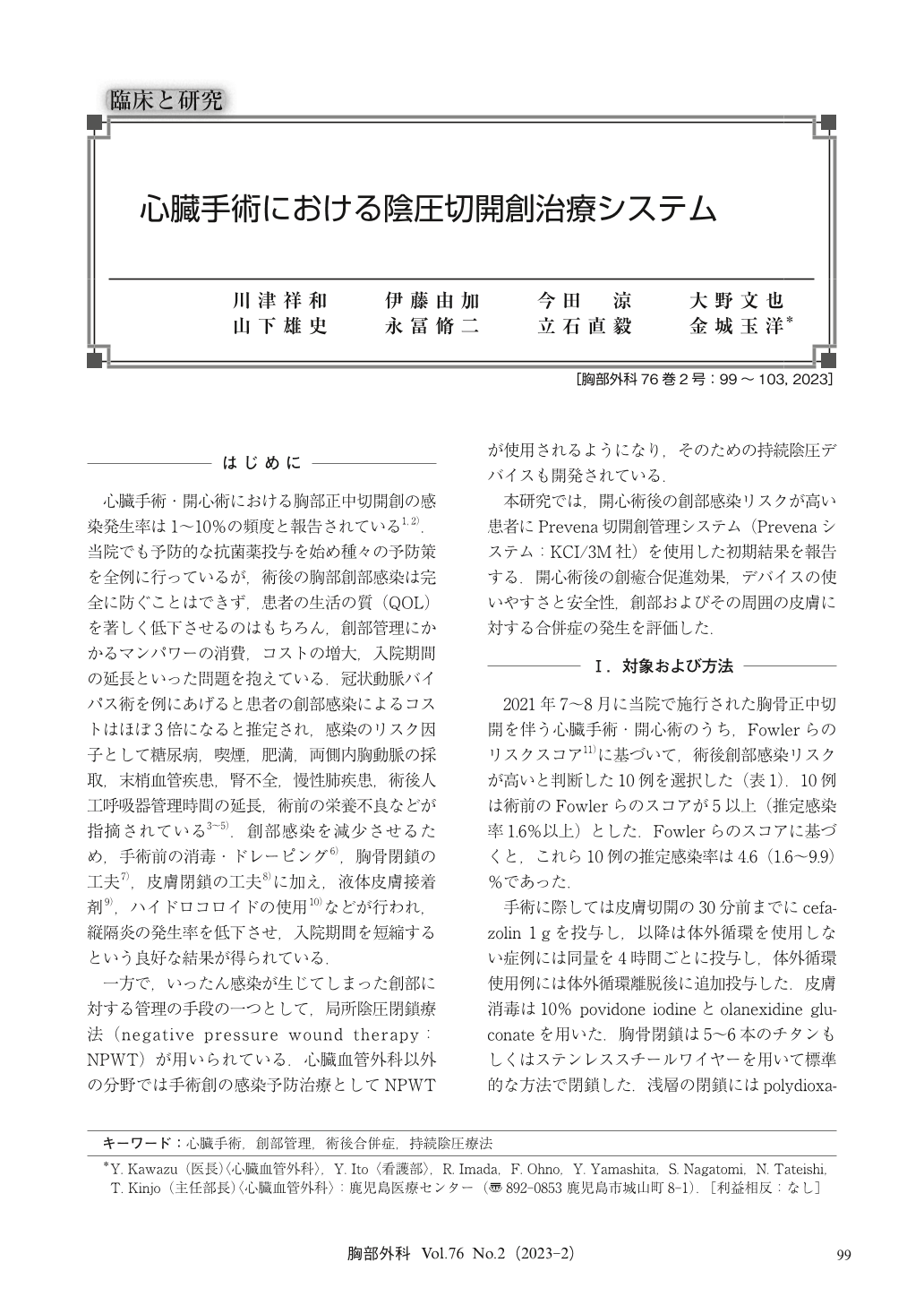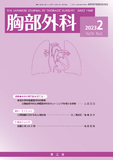Japanese
English
- 有料閲覧
- Abstract 文献概要
- 1ページ目 Look Inside
- 参考文献 Reference
- サイト内被引用 Cited by
心臓手術・開心術における胸部正中切開創の感染発生率は1~10%の頻度と報告されている1,2).当院でも予防的な抗菌薬投与を始め種々の予防策を全例に行っているが,術後の胸部創部感染は完全に防ぐことはできず,患者の生活の質(QOL)を著しく低下させるのはもちろん,創部管理にかかるマンパワーの消費,コストの増大,入院期間の延長といった問題を抱えている.冠状動脈バイパス術を例にあげると患者の創部感染によるコストはほぼ3倍になると推定され,感染のリスク因子として糖尿病,喫煙,肥満,両側内胸動脈の採取,末梢血管疾患,腎不全,慢性肺疾患,術後人工呼吸器管理時間の延長,術前の栄養不良などが指摘されている3~5).創部感染を減少させるため,手術前の消毒・ドレーピング6),胸骨閉鎖の工夫7),皮膚閉鎖の工夫8)に加え,液体皮膚接着剤9),ハイドロコロイドの使用10)などが行われ,縦隔炎の発生率を低下させ,入院期間を短縮するという良好な結果が得られている.
We report on the efficacy of the Prevena incisional wound management system, a negative pressure wound care system, in patients at a high risk of wound infection following cardiac surgery.
Methods:Ten patients with a mean Fowler risk score of 4.6 (1.6~9.9) were included. The Prevena system was applied immediately after surgery and used for 5 days while negative pressure of -125 mmHg was continuously applied, and the condition of the wound and surrounding skin was evaluated immediately after removal of the Prevena system.
Result:Ten patients had completely healed wounds, and no skin damage around the wound due to negative pressure after removal of the Prevena system was observed. No skin damage was observed around the wound after removal of the Prevena system, and no wound complications occurred until discharge.
Conclusions:The Prevena system is safe, easy to use, and useful for wound healing in patients at a high risk for wound complications after cardiac surgery.

© Nankodo Co., Ltd., 2023


